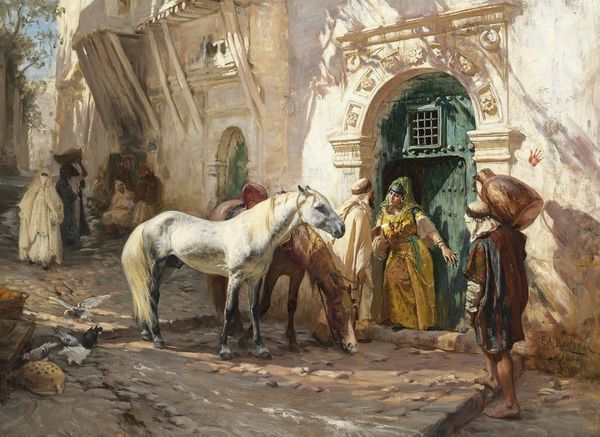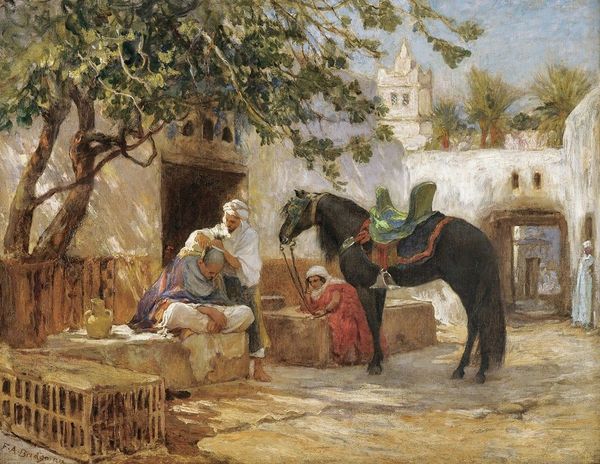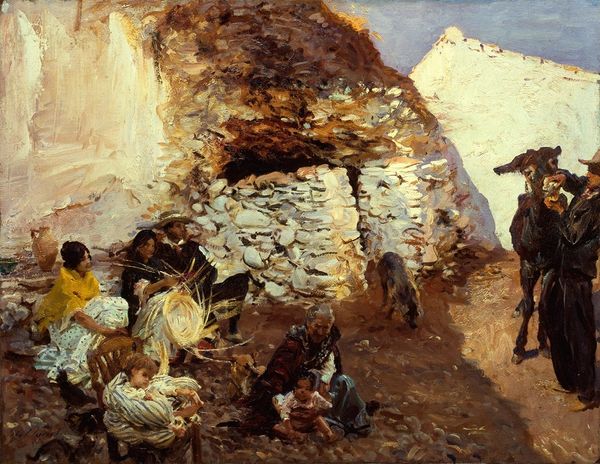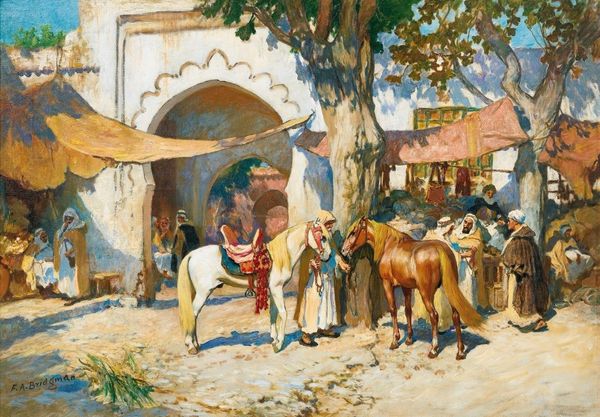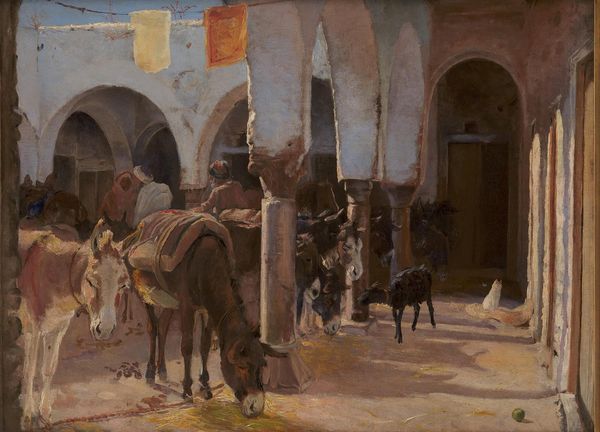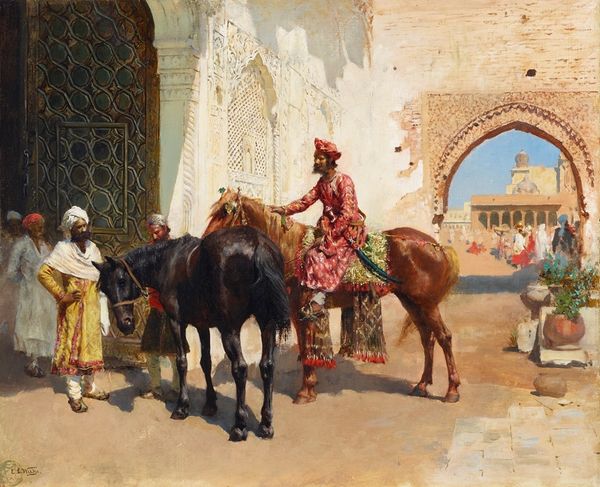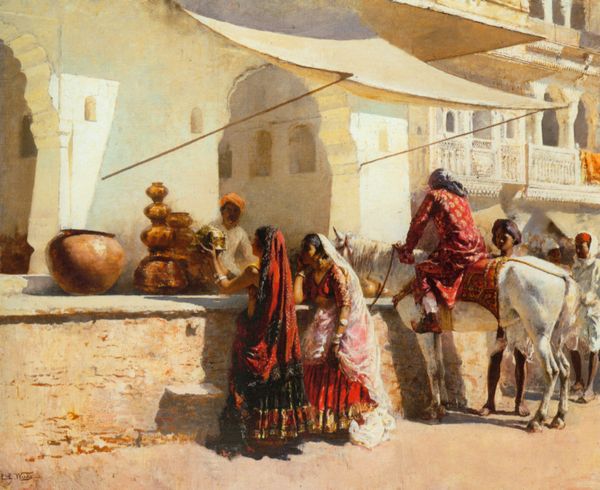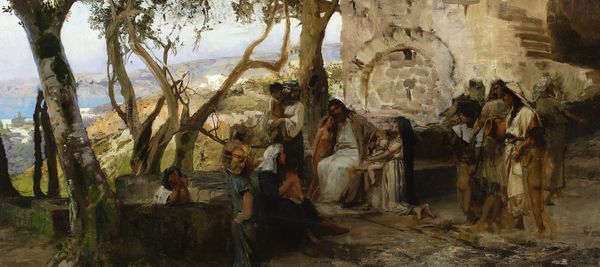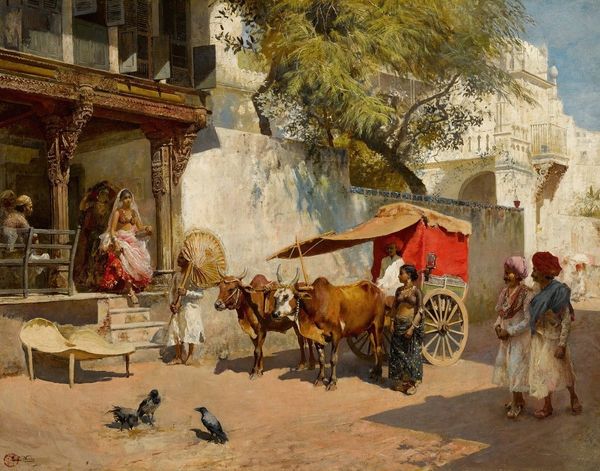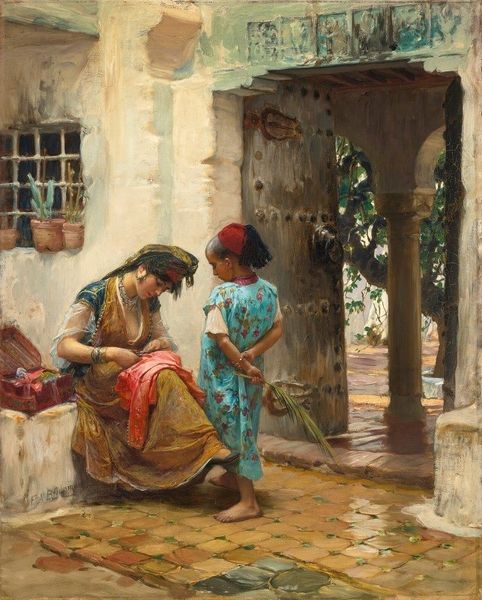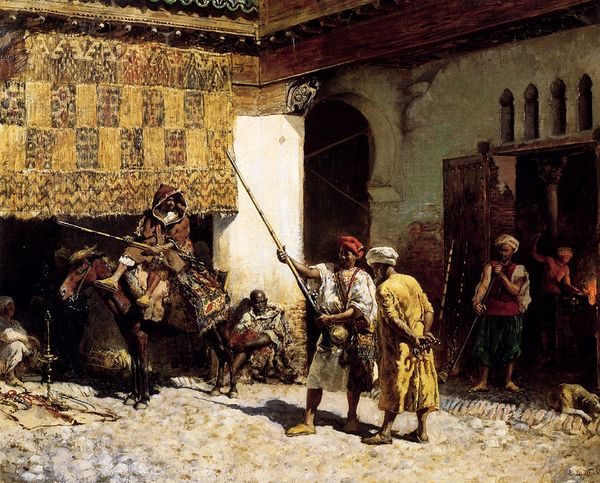
oil-paint
#
figurative
#
oil-paint
#
landscape
#
figuration
#
oil painting
#
orientalism
#
genre-painting
#
academic-art
#
realism
Copyright: Public Domain: Artvee
Curator: Here we have Frederick Arthur Bridgman's "Street in Algeria," an oil painting completed in 1882. It exemplifies the Orientalist style, popular at the time, that romanticized the "exotic" cultures of North Africa and the Middle East. Editor: It's immediately striking how tangible everything appears—you can practically feel the rough texture of the buildings and the smooth coats of the horses. The craftsmanship certainly shines through. Curator: Bridgman had unprecedented access, even traveling extensively in Algeria, which afforded him opportunities beyond many of his peers. It's interesting to consider this level of access and the resulting power dynamics inherent in representation. This access shaped how he portrayed Algerian daily life, primarily for Western audiences. Editor: The artist pays incredible attention to the details of the everyday: clothing, architecture, even the stances of the animals. But where were the paints manufactured? And what specific techniques did Bridgman employ to achieve these rich, nuanced textures? I’m curious about the industrial systems that produced his paints and canvases, connecting Western consumerism with this exotic subject. Curator: Absolutely, the production context is crucial. Yet, we cannot dismiss the painting's performative elements. Bridgman often staged scenes, directing his models to create idealized moments rather than purely capturing spontaneous reality. How does this intention influence the work's reception, considering its supposed authenticity? Editor: Well, perhaps “authenticity” is the wrong benchmark here. The artist clearly manipulated these natural materials—pigments, linen—to shape perception. Understanding how Bridgman utilized them helps unpack the painting’s visual vocabulary, revealing the social underpinnings and ideologies imbued into its materials. Curator: That's precisely it! We're left to reconcile its visual appeal and skillful rendering with its underlying historical implications. Orientalism is an issue! Editor: It leaves one questioning how everyday materials from paints to canvas serve as a window to colonial trade and art. It highlights how material processes transform what could be, and have it enter society imbued with an ideological lens. Curator: Bridgman's 'Street in Algeria' serves as a window into 19th-century cultural perceptions and artistic conventions that invites careful and critical analysis. Editor: Precisely! It makes me wonder about the material chains that underpinned its creation. Examining the artist’s manipulation of the real challenges our interpretation.
Comments
No comments
Be the first to comment and join the conversation on the ultimate creative platform.

